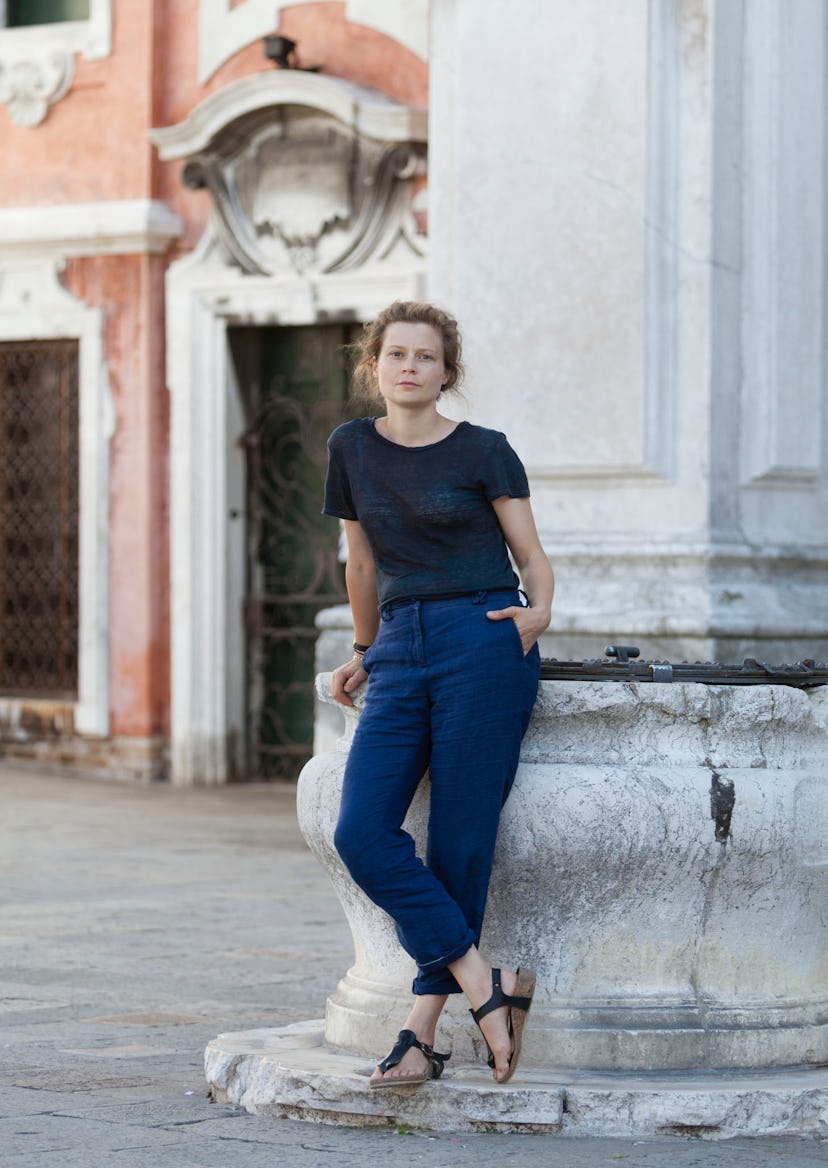Corin Sworn’s Costume Drama

When the Canadian-born, Glasgow-based artist Corin Sworn won last year’s Max Mara Art Prize for Women, she was awarded a six-month residency in Italy, where she immersed herself in the country’s age-old culture of costume and theatre. The resulting exhibition at London’s Whitechapel gallery brings to life the slippery history of renaissance wandering players and acrobats, known as the Commedia dell’Arte, with some help from the Italian fashion house’s own traditional tailors.
In a darkened gallery Sworn has created a magical stage set, softly lit by colored bulbs and paper moons. Alongside props including a fake beard, a decidedly phallic truncheon and what appear to be the mummified remains of a rat and a hare, are costumes for tumblers, mimes and actors hanging from wooden stands.
With no surviving garments to work from, Sworn turned to drawings and written accounts to fashion the costumes, which were handmade by Max Mara’s craftspeople in Reggio Emilia, a city where the tradition of tailoring goes back generations. Capes and loose white tunics and trousers patterned with zigzags and triangles, conjure a bygone cast of lovers, bold captains and clowns.
The strict social significance of renaissance dress and how theatre threw a spanner in the works is what most fascinates Sworn though. “People could only wear specific clothes by law, but clothing was so valuable,” she explains. “During my research I discovered a jerkin that cost more than Shakespeare’s house. Servants couldn’t necessarily wear clothes they might have been given by their masters, but they could pawn them at theatres. At the same time, people were watching social ranks become mobile on stage.”
The art of imposture is also central to Sworn’s essay, narrated through several speakers amid the clothes and props, and a film shot by former Max Mara Prize winner Margaret Salmon that unfolds on two narrow mirror-like screens. The essay explores the legendary 16th-century case of the impersonation of Martin Guerre, the Basque peasant who, having left his wife, was usurped by a stranger claiming to be the original Guerre. The imposter was eventually unmasked and hanged. In a dark reflection of his fate, the film features rope-climbing feats performed by women acrobats in period drag.
“The Commedia dell’Arte was the first time women came to the stage,” enthuses Sworn. “They played lovers and narrated poems and philosophy. As a contemporary artist the idea that women brought philosophy to the popular stage was wildly exciting.”
Photos: Corin Sworn’s Costume Drama
Corin Sworn. Photo courtesy Max Mara and Collezione Maramotti.
Corin Sworn, Max Mara Art Prize for Women, Production still. Photo by Margaret Salmon.
Corin Sworn, Max Mara Art Prize for Women, Production still. Photo Margaret Salmon.
Masks and characters of the Commedia dell’Arte. Courtesy Victoria and Albert Museum.